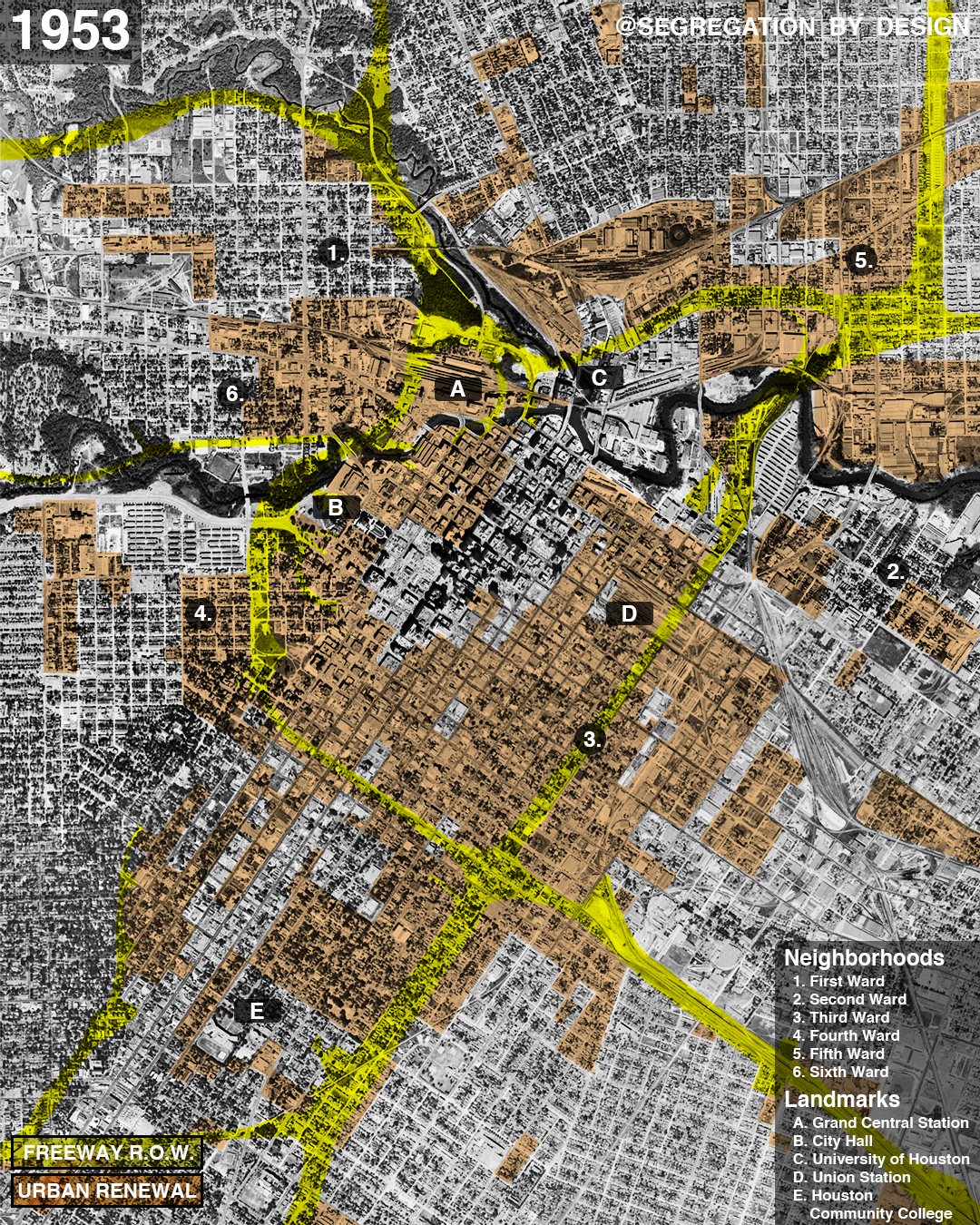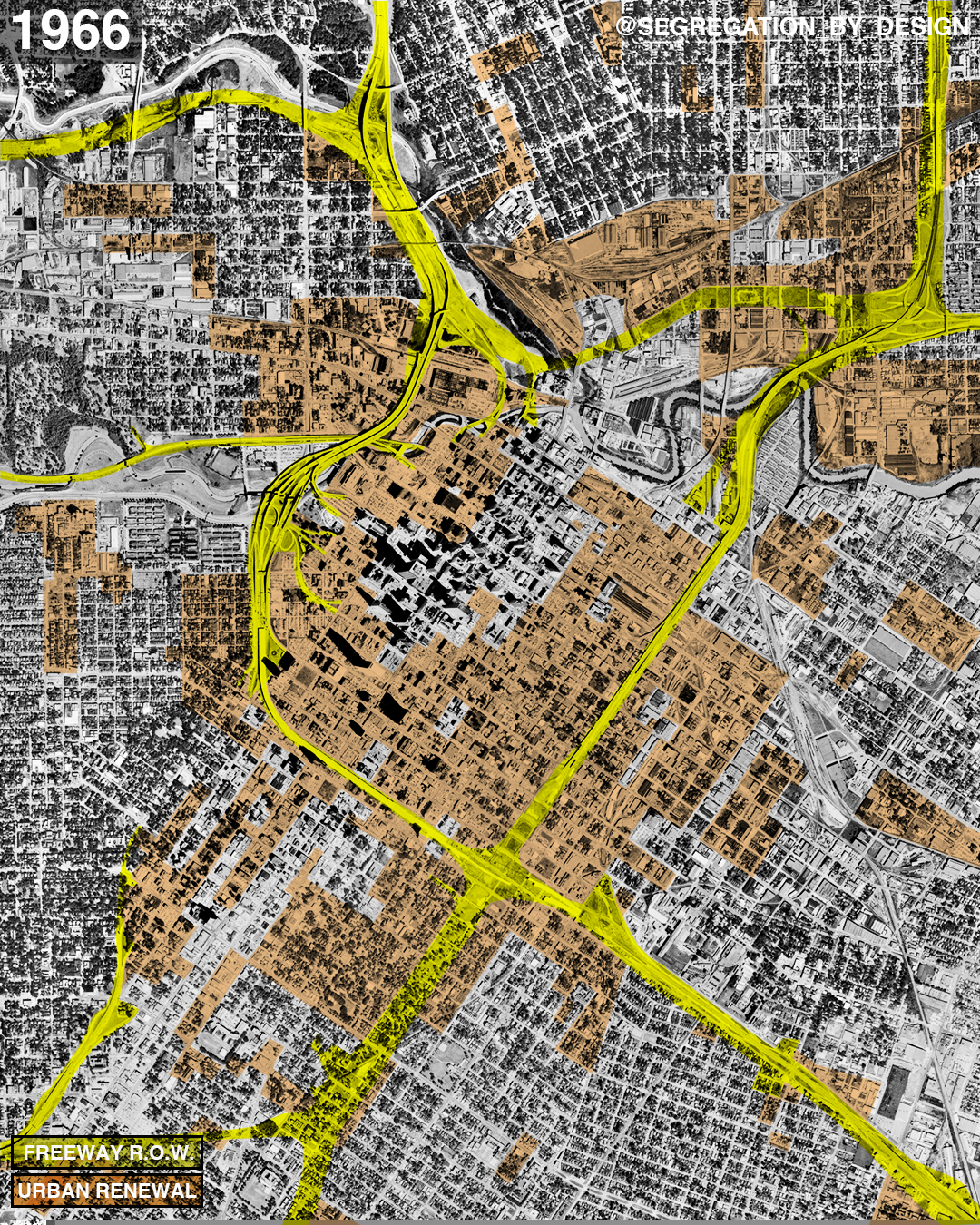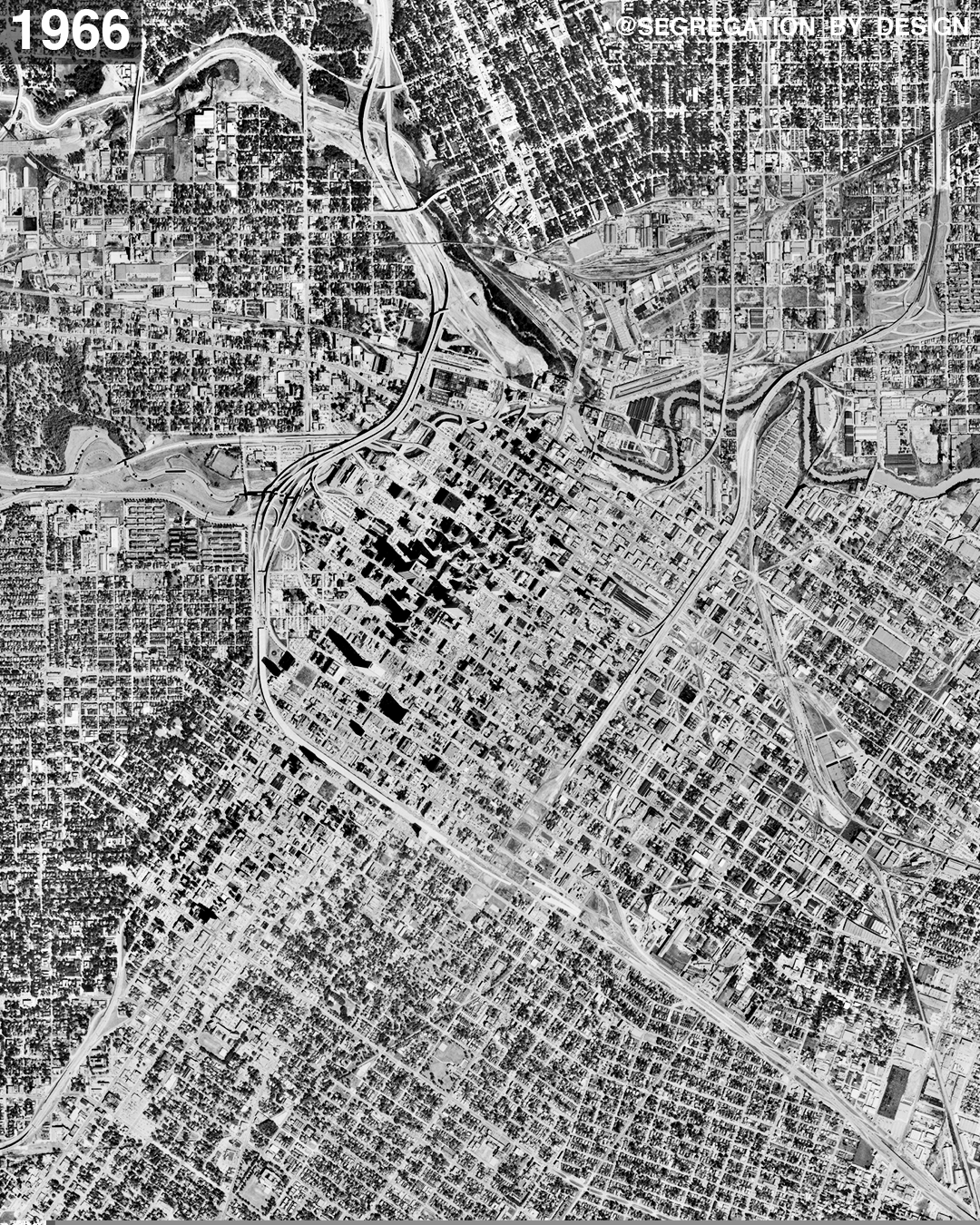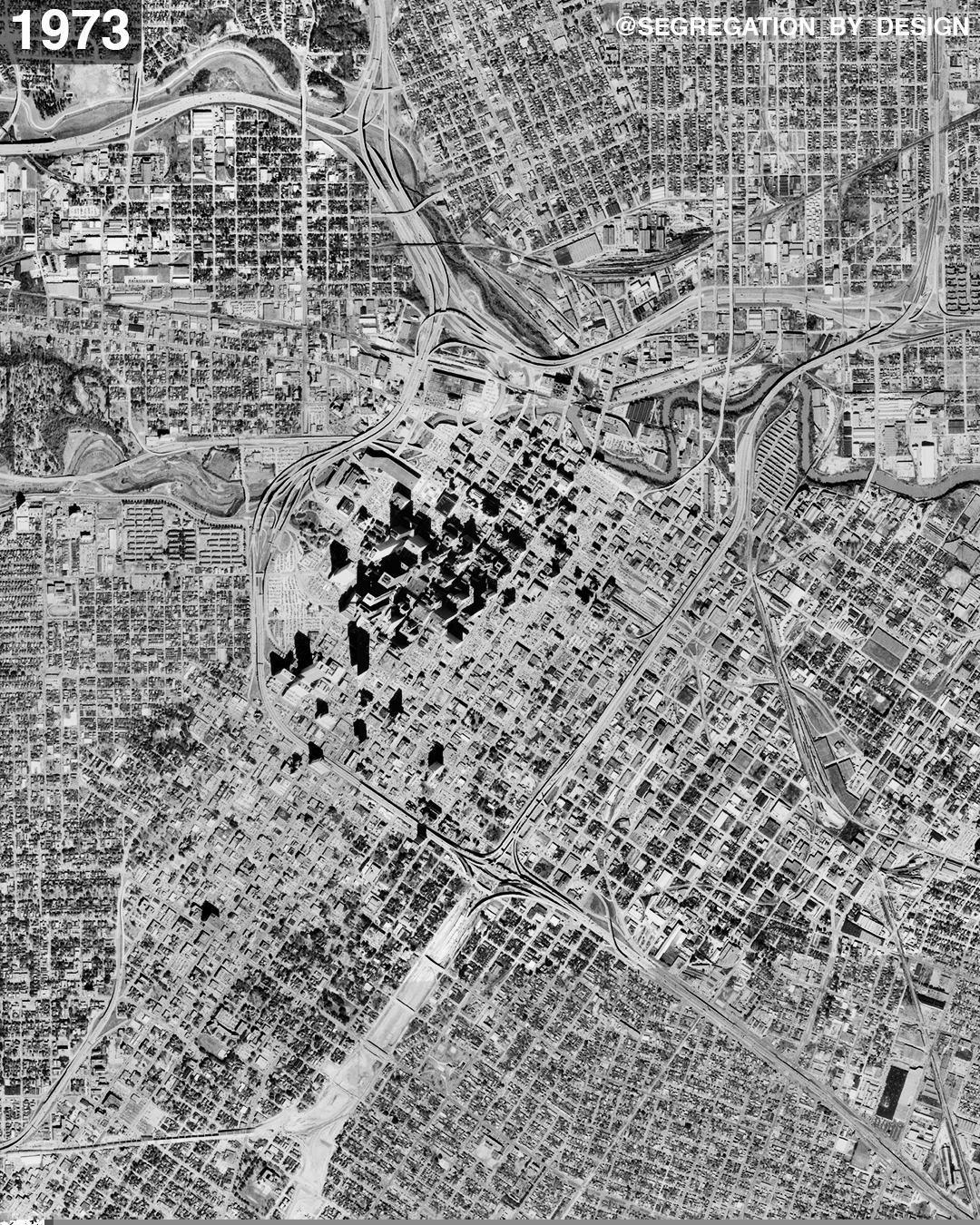HOUSTON: FREEWAYS & URBAN RENEWAL
Houston was strangled by freeways, displacing a staggering 40,000 people in Harris County between 1950-1980 (the most of any city covered so far). The Interstate and urban renewal upended the very organizational logic of Houston. Prior to the freeways, Houston had been organized in a series of six “wards” radiating from the center of the city, at the confluence of the Buffalo Bayou and the White Oak Bayou; after the freeways Houston had been chopped up into an isolated series of urban islands floating in a sea of parking and roadways. By the late 1980s, a full 35% of Downtown Houston was used for surface parking, with still more given over to high-rise parking structures.
The First Ward is gone. Consisting of Houston’s historic central business district, nearly 95% of its historic office buildings, houses, and apartment buildings have been demolished since the beginning of urban renewal.
The Second Ward has been a predominantly Mexican-American neighborhood since after World War II. I69 severed the neighborhood from Downtown. Urban renewal pushed the neighborhood to the east, clearing several blocks of the western portion, displacing thousands.
The Third Ward was and is the center of the African-American community in Houston. Over 10,000 people alone were displaced from the Third Ward, the vast majority of whom were African-American. Swaths of the neighborhood were severed by the freeway, now residing within the freeway loop that defines downtown; or to the west of the interstate in the area now known as Midtown. More on the Third Ward in a future post.
The Fourth Ward was home to Houston’s first free black population, Freedmen’s Town. A full 33% of the buildings in the Freedmen’s Town were demolished during urban renewal, displacing thousands. The Fourth Ward was cut in two by the Downtown freeway loop, with Freedmen’s Town itself having been severed from Downtown by I45.
The Fifth Ward was home to a mix of African-Americans and Mexican-Americans. Its entire southern portion was cleared, leaving the neighborhood also divided from Downtown.
Much of the Sixth Ward was saved from destruction, though I haven’t yet been able to find historical demo data.











